20 Questions to Ask Your CGM Provider (with Kara Collier)

Key Takeways
A continuous glucose monitor is a small device worn on the back of the arm that tracks your body’s glucose levels 24/7. But are CGMs only beneficial for people with diabetes? Is a CGM different from a glucometer? And is a CGM the best option for you and your current health needs?
There are many reasons that a CGM can be beneficial, but if you’ve never used one, you may have questions about exactly how it works and if it’s right for you.
To answer these questions and more, we sat down with Kara Collier, our co-founder and VP of Health here at Nutrisense, to take a closer look at how CGMs work and what you need to know about these devices before using one.
Q: Let’s start with a question many people might have… Is applying a CGM painful?

A: This is a common misconception—CGMs are not painful to apply. Once you’ve put it on, you’ll hardly notice it’s there. You may feel a slight prick when inserting the sensor, but it will sit on the back of your arm unnoticed after that.
Q: That’s a relief. So as a CGM wearer, what type of information or data will I be able to see?
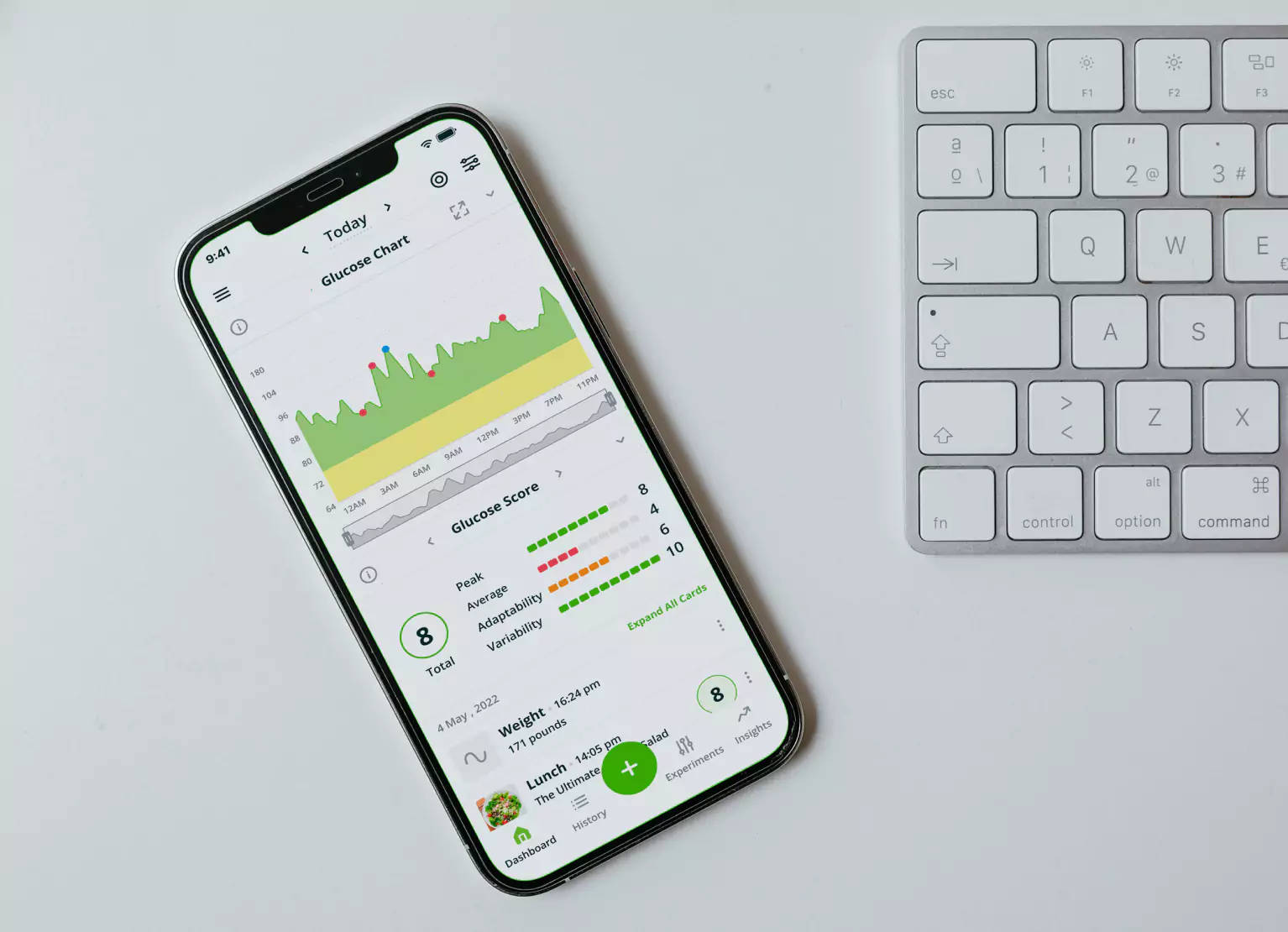
A: A CGM measures your glucose levels and provides 24/7 data that you can view and analyze to look for trends and identify problems and patterns. You can use all of this to make more informed decisions about your health.
These CGM devices have numerous benefits for people with diabetes as we know, but this kind of technology can also help people who might not be aware of their high blood sugar levels start changing their behavior and reverse conditions such as prediabetes.
Additionally, even if your glucose levels are not abnormally high, your responses will be as unique as you are. How one person responds to the same food will be different from another person, so to truly personalize your approach to nutrition and health, you must gather the data.
Q: How does the CGM work?
A: A CGM is a small device that is applied to the back of the arm and provides glucose readings for people who want to monitor their glucose levels. It uses a tiny microfilament, which is inserted into the interstitial fluid, and this is what measures glucose 24/7.
{{rich-text-cta-3="/style-guide"}}
Q: Sounds easy enough. What sensor does Nutrisense use, and why should I sign up for the program?
A: There are a few different manufacturers of CGMs in the U.S. which are Dexcom, Abbott, Medtronic, and Senseonics Eversense.
With the Nutrisense CGM Program you get a monthly shipment of glucose biosensors. At Nutrisense, you can go beyond CGM or glucose data. You can sign up for insurance-covered video calls to work with a personal dietitian certified in glucose, to experiment and tailor your diet to your goals. You can also analyze trends over time in the cutting-edge Nutrisense App. This will help you not just view glucose data, but actually make the most informed choices about the foods you consume and their impact on your health.
Q: How often do I have to change the sensor?
A: Each CGM provider may have different ranges for how long you can wear the device.
Q: You mentioned cost earlier… Are CGMs covered by insurance or will I need to pay out of pocket?
A: Some CGMs are covered by Medicare and private insurance. While Nutrisense is not currently able to accept insurance, HSA and FSA payments are both permitted.
Nutrisense’s CGM program also offers a range of plans that vary in price and benefits and are relatively cost-effective compared to other options out there.
Q: Does that mean anyone can use a CGM?
A: Yes—almost anyone can use a CGM; it’s not only for people with diabetes. To be more specific, though, there are different FDA regulations depending on the supplier of your device, but most CGMs are approved for use by anyone 18 years and older.
A few exceptions to this are important to note—anyone on insulin therapy or with hypoglycemia should check with their healthcare provider before using a CGM.
Q: What levels should I track to see if I’m following healthy patterns?
A: Once you have your CGM on, you’ll be able to track your progress and collect your data inside the app used by your provider. You can monitor your postprandial responses, see what your baseline glucose values are by looking at time-in-range, fasting levels, and average glucose levels), and track your glycemic variability.
Hemoglobin (A1C) is what we think of as the gold standard for monitoring glycemic control and looking out for any other health condition risks. But this is only a one-time lab value that gives you an estimate of your average glucose levels.
Unfortunately, an average does not tell you anything about how high or low your glucose might be going. A CGM is the only tool that can provide a movie view of your glucose rather than a snapshot, which allows you to see the fluctuations in your values and pinpoint what's working and what's not.
Q: Speaking of that… Are CGMs actually accurate?
A: Every type of glucose measurement will have a margin of error, but CGMs are regarded as an accurate method of tracking glucose levels. These devices are measured using the MARD score, or mean absolute relative difference, to determine their exact margin of error.
Q: Understood. So, once I’ve applied my CGM, how do I access my data?

A: To get the most value out of your CGM and to be able to track your progress and levels continually, most CGMs will require the wearer to have a smartphone to be able to access their data. Apps like Nutrisense allow users to track their glucose levels and analyze which foods or habits cause spikes over time and 24/7.
Q: Will I need to use more than one app to connect the sensor?
A: No, you will not need to use more than one app to connect the sensor. Your CGM or glucose biosensor will only be connected to your provider’s app to view your glucose data. The Nutrisense App allows you to track your exercise and sleep habits in addition to your diet to provide a complete picture about your health and glucose levels.
However, if you’re looking to get the most benefit from your glucose data, many other health-focused apps can be paired with and support you in tracking your nutrition, macros, exercise, and weight loss goals.
Q: What happens if I have questions? Can you help me interpret the data?
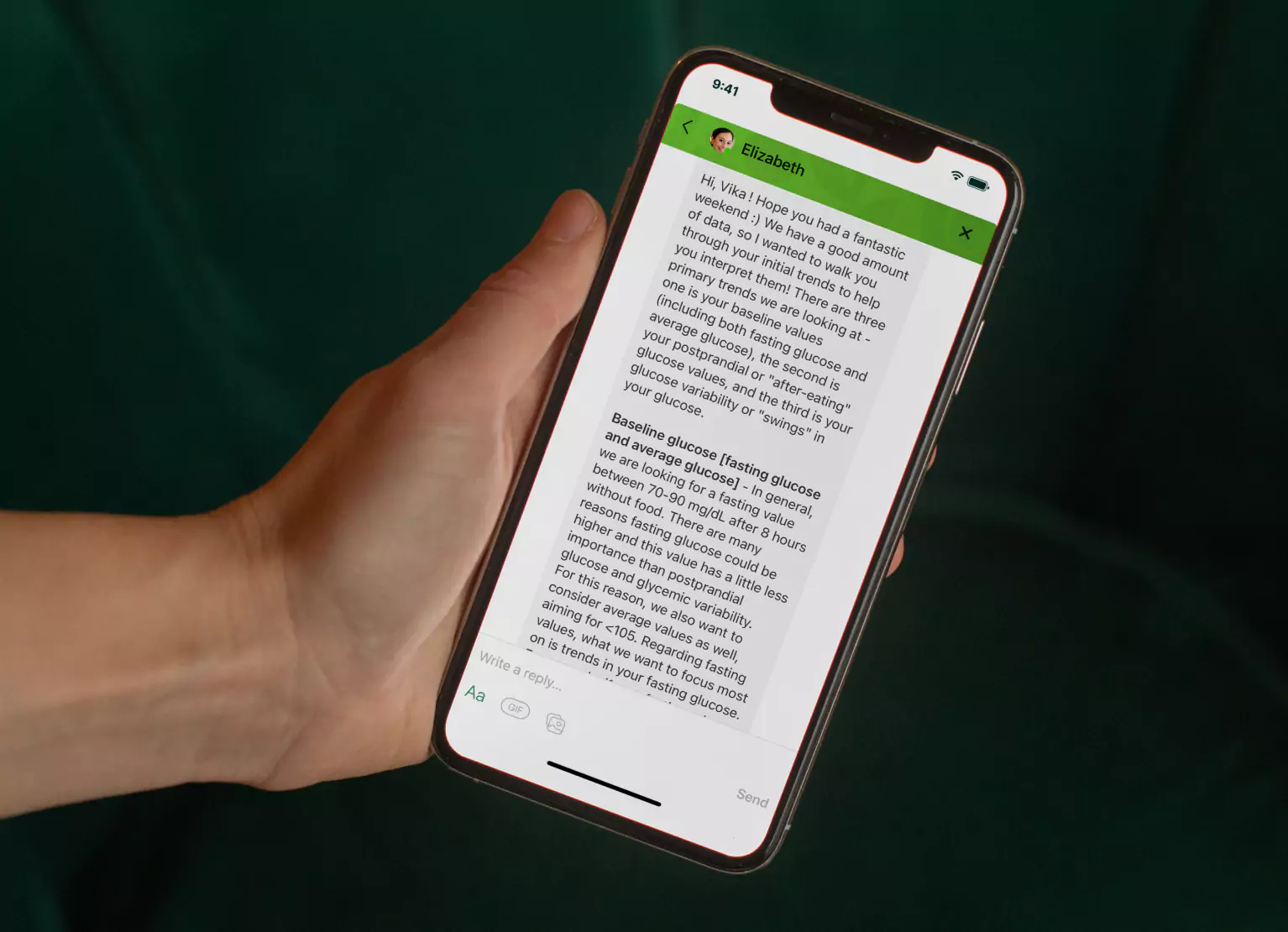
A: Yes. At Nutrisense, you can sign up for insurance-covered video calls to work 1:1 with a personal dietitian certified in glucose, to experiment and tailor your diet to your goals. This will help you make the most informed choices about your habits, your body's response to them and the impact of the changes you make on your health.
Q: What things can I use the data from my CGM for?
A: There are many valuable insights you can take away from your body’s glucose data. I’ll go through five different things you and your dietitian or doctor can use this information for:
- Assessing your overall metabolic health: Your CGM can help you look for any warning signs of insulin resistance or metabolic dysfunction.
- Figuring out which foods are best for you: You can experiment with various ingredients to see which foods you have the lowest glucose responses to.
- Determining which meal combinations and timing work best for you: If you have a glucose spike, this is an opportunity to experiment and learn. You can try eating protein first, adjusting your carbohydrate source, carb portion size, total meal portion size, eating earlier in the day, timing a workout around your meal, taking a walk afterward, minimizing stress, entering a parasympathetic state before eating, and even getting good sleep the night before.
- Considering all four pillars of health when analyzing your data and trying to improve your glucose: The CGM lets you see the impact nutrition, physical activity, stress, and sleep can have and help guide you towards healthier habits that can lower your glucose levels.
- Using your glucose data to keep you accountable to your goals: Whether it be weight loss, sleeping more, or lowering stress levels, it's a helpful way to stay accountable.
Take a look at the images below for a few visual examples of how your dietitian can help you understand the data from your CGM in the Nutrisense App.
Assessing Metabolic Health

Learning What Foods Suit You Best
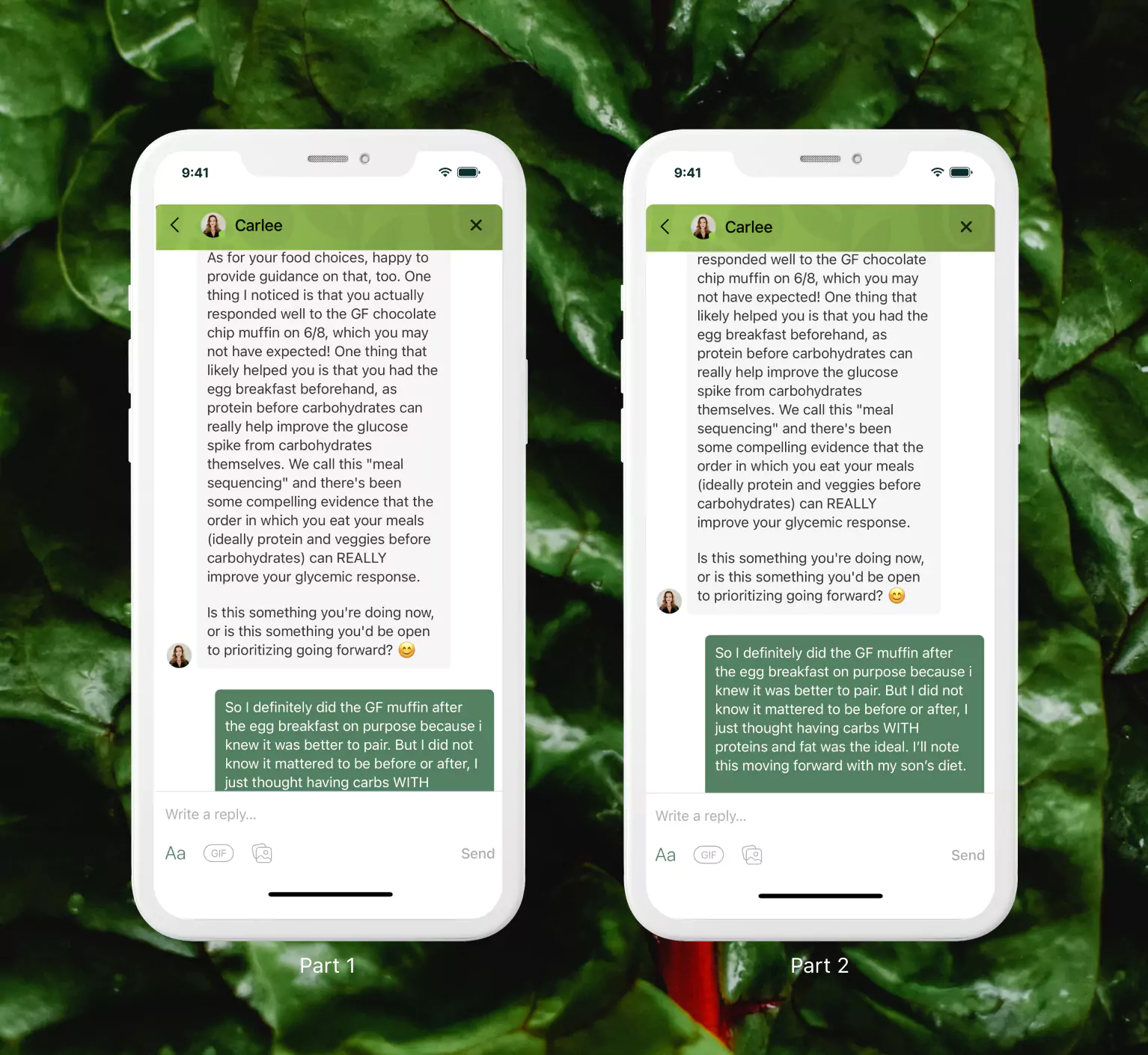
Understanding Glucose Shifts in Relation to Your Diet
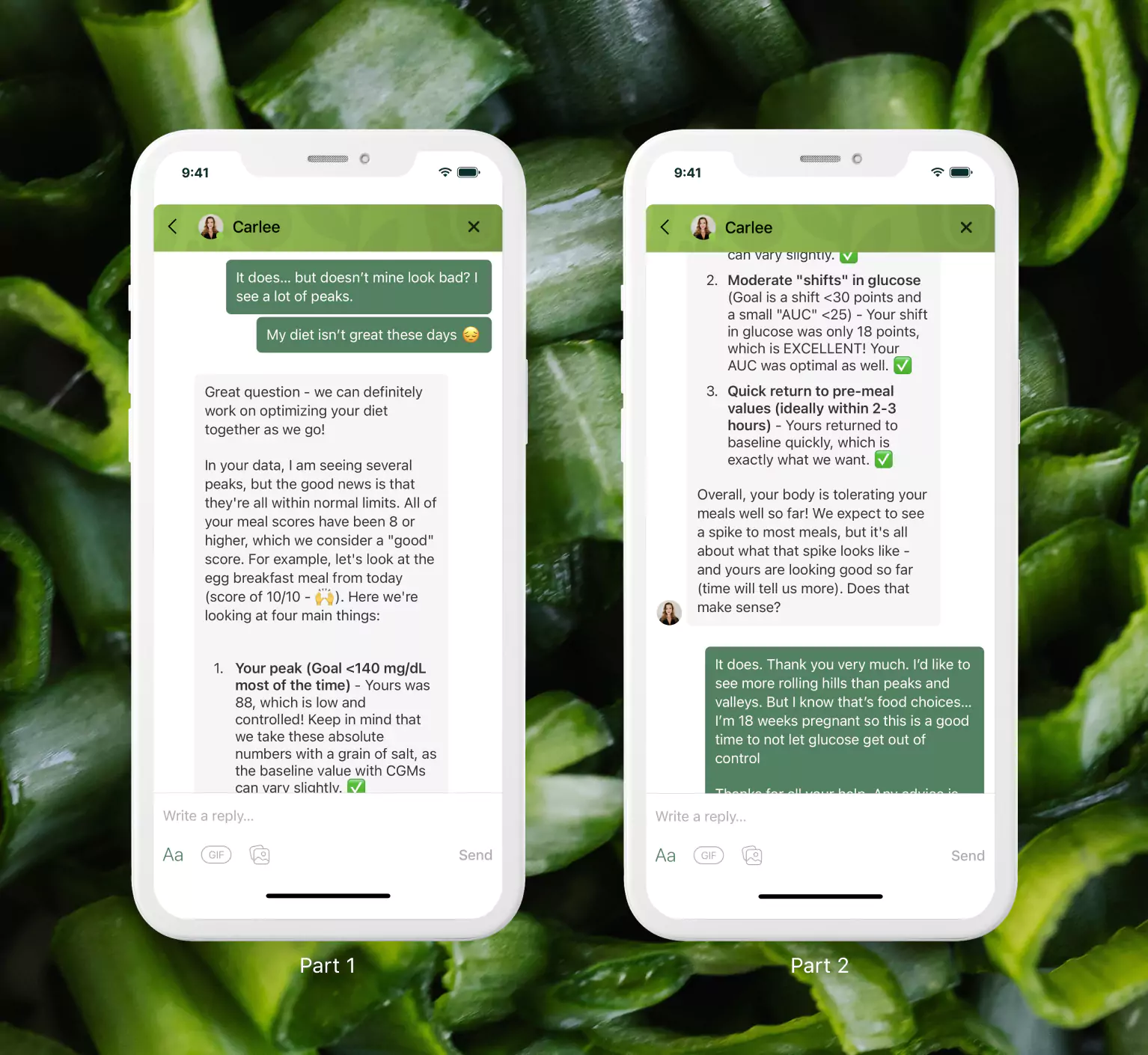
Q: Can I wear my CGM at all times or does it need to be removed for certain activities?
A: One of the biggest advantages of the CGM is that it’s extremely durable and can be worn at the gym, in the shower, on a plane, and in the swimming pool. Most CGMs also come with a bandage you can stick over it to make sure it’s securely fastened.
Q: That’s great! Do I still have to test my glucose with a meter while using a CGM then?
A: No! Meters are not required if you’re using a CGM to measure your glucose levels. However, it can be helpful to have a fasting glucose from the last six months to have a baseline to compare with.
Q: And what if I’m not diabetic? Can I still wear a CGM?
A: Everyone should be able to take control of their health. Even in healthy people, elevated blood glucose levels can impact physiological pathways related to aging, cardiovascular health, kidney function, and the risk of developing a metabolic disorder like diabetes.
With all the actionable insights that a CGM can provide, individuals without diabetes can reduce their likelihood of developing diabetes and other diseases. They can also discover how their body reacts to their diet and habits and use that information to create a personalized plan for their individual needs.
Even athletes can benefit from access to this data to learn more about how their bodies respond to high carbohydrate intake and high-intensity exercise. These insights, paired with guidance from Nutrisense, allows anyone to take steps related to exercise and nutrition to manage their health.
Q: Do CGMs have any other uses? Can they be helpful with weight loss, for example?
A: That’s a great question. Many people don’t realize that high glucose levels and obesity are often correlated.
The CGM can be a great way to hold yourself accountable, recognize habits that might be hindering your weight loss, and learn how to prevent our insulin levels from rising so that we can effectively burn fat.
Q: So, where can I get a CGM?
A: There are several CGM providers currently on the market, and each one has its own cost and solutions. Nutrisense’s CGM program is one of the most inclusive and cost-effective options compared to some other alternatives.
Q: Wrapping things up here… How do I know if a CGM is right for me?
A: Speaking with your primary care physician to discuss your individual needs is an excellent first step for most people. Whether you’re at risk for diabetes, currently have it, or simply wish to learn more about your body’s response to certain things, a CGM can help almost everyone understand their body better.
One of the benefits of CGM providers like Nutrisense is that anyone can sign up for a no-commitment plan to try out a CGM and see if the program provides the insights and support you need to optimize your health.
Q: Thanks so much for all this information, it’s been a pleasure learning about CGMs! Is there anything else I should keep in mind?
A: Thank you! I hope this has been helpful in understanding CGMs. One takeaway that I’d like to emphasize again to everyone reading is that CGMs aren’t just for people with diabetes.
Studies have shown that only twelve percent of Americans are considered metabolically healthy, and glucose levels can play a massive part. You might be surprised what you learn about your healthy habits while using a CGM.

Find the right Nutrisense programto turn insight into progress.
Go Beyond Glucose Data with Nutrisense
Your glucose can significantly impact how your body feels and functions. That’s why stable levels are an important factor in supporting overall wellbeing. But viewing glucose isn't enough. Nutrisense, you’ll be able to learn how to use your body's data to make informed lifestyle choices that support healthy living.
One-to-one coaching
Sign up to access insurance-covered video calls to work with a glucose expert: a personal registered dietitian or certified nutritionist who will help tailor your lifestyle and diet to your goals.
Monitor and measure what matters
With the Nutrisense CGM Program, you can monitor your glucose with health tech like glucose biosensors and continuous glucose monitor (CGM)s, and analyze the trends over time with the Nutrisense App. This will help you make the most informed choices about the foods you consume and their impact on your health.
Find your best fit
Ready to take the first step? Start with our quiz to find the right Nutrisense program to help you take control.

Carlee's training at Western Illinois University and an internship at the Memphis VA Hospital lead her to a career in outpatient counseling and bariatric nutrition therapy. In these positions, Carlee realized many of the disease states (upwards of 80%!) her patients experienced were actually preventable. She knew she had to dig deeper into preventative health and has since been passionate about helping people translate this complex glucose data into actionable changes anyone can implement into their everyday lives.


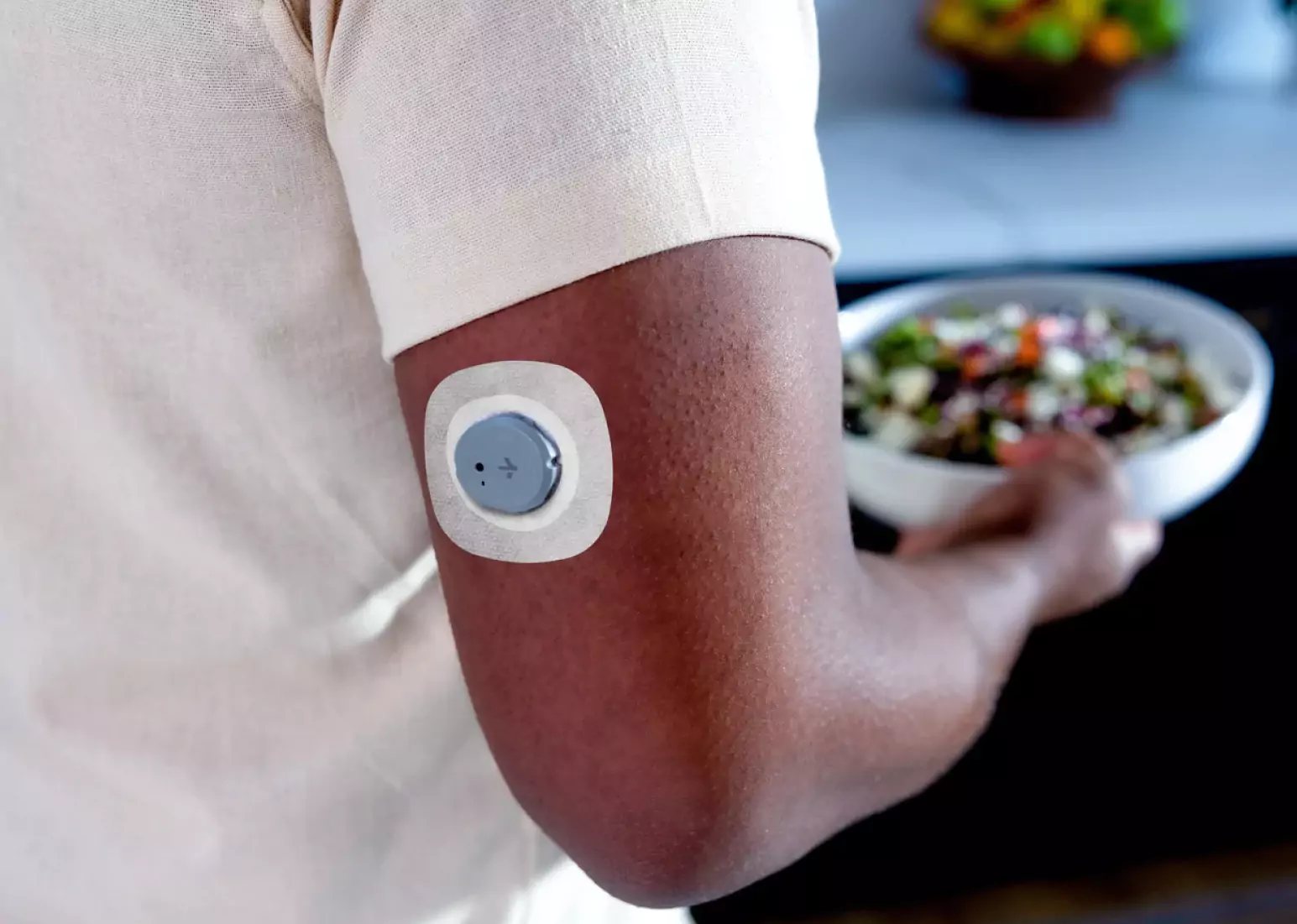
.png)
